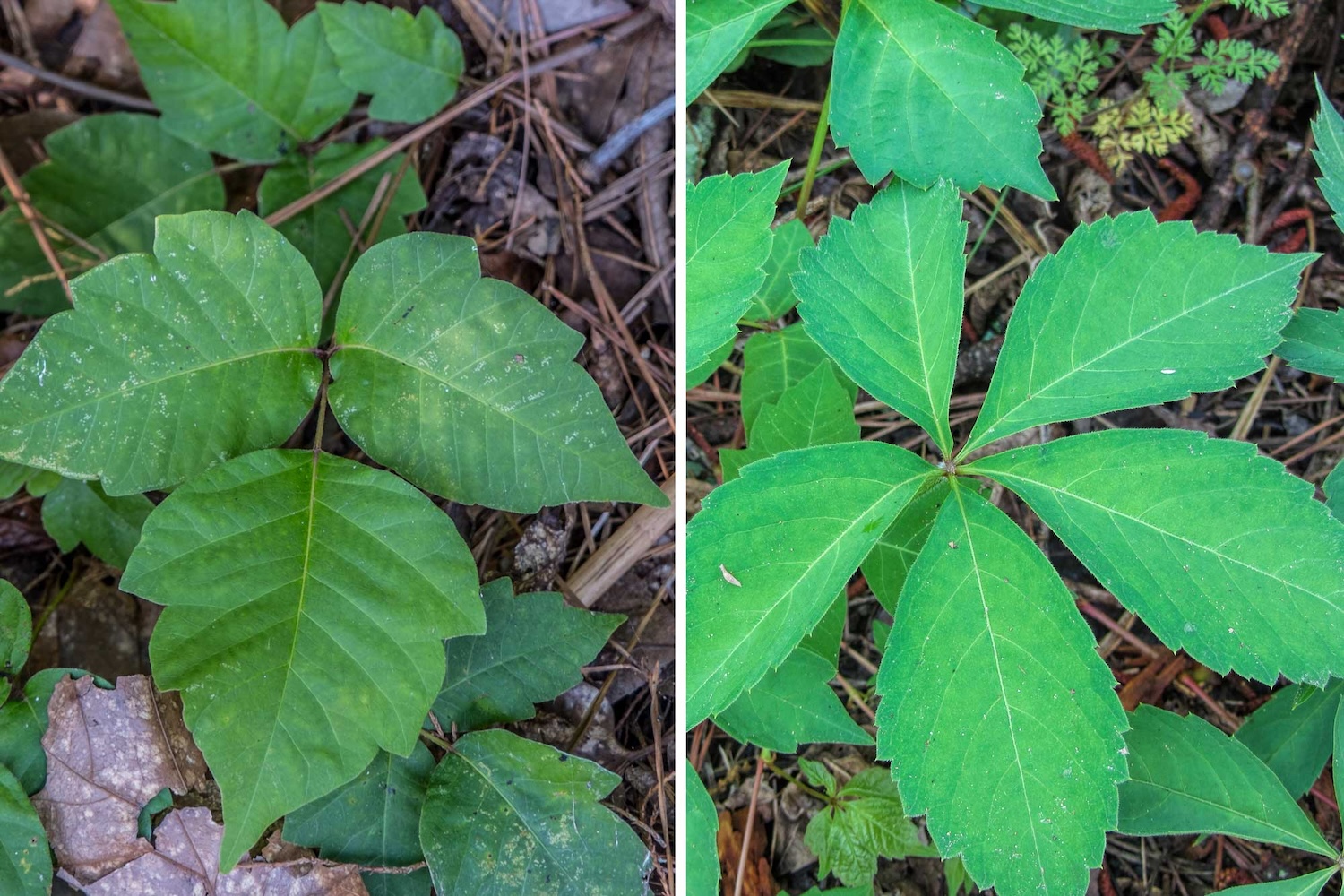What's the difference: Poison ivy vs. Virginia creeper

You've probably heard the saying "leaves of three, let it be" as a warning to stay away from poison ivy, but have you ever heard the phrase "leaves of five let it thrive"?
Keeping this phrase in mind can help you avoid poison ivy and also help you distinguish it from Virginia creeper, which has a similar leaf shape to poison ivy but won't leave you with an itchy, uncomfortable rash.
Both poison ivy and Virginia creeper have tooth-edged leaflets, and both are also vines. Adding to the confusion between the two, they often grow together. The number of leaflets is an easy way to tell them apart if you can get a good look. Poison ivy has three leaflets to Virginia creeper's five, according to the Penn State University Extension.
The flowers produced by the plants in late spring are another good differentiating point between the two. While poison ivy produces clusters of tiny white flowers, the flowers on Virginia creeper are small and greenish in color, the Penn State extension reports. Both plants also produce berries, and these can be a good clue too. Virginia creeper belongs to the grape family, and in late spring, after the flowers die back, it produces small, dark blue berries that look like small blueberries. Berries don't appear on poison ivy plants until early fall, and the clusters of small berries on that plant start green in color and then turn white or ivory when they are ripe, the Penn State Extension reports.
Color can help you distinguish between the two plants in the right season. Virginia creeper and poison ivy are both a vibrant green color in the summer, but both are red or reddish in color at different times of the year. In the spring, the new leaf growth on poison ivy plants can appear reddish, the Penn State Extension reports. In the fall, Virginia creeper adds to the fall color show with its leaves turning a bright red color.
Two more plants you want to avoid like you do poison ivy are poison oak and poison sumac. All three of these related plants are poisonous and can cause an allergic reaction leading to an itchy, painful rash. Poison oak and poison sumac are a little easier to distinguish from poison ivy because of their leaf shape.
Poison oak also has three leaflets, but the leaves have more rounded lobes, sort of like the leaves of an oak tree. Poison oak leaves are also more dull than poison ivy leaves, and the plant is more shrub-like than poison ivy, according to the Alabama Cooperative Extension System. Poison sumac is easier to differentiate because it is not as similar looking as the other plants. It has between seven and 15 leaflets that grow along the plant stem arranged in pairs. The leaflets have smooth edges and the tips are pointed.
While poison ivy can grow in many areas, particularly in and along woodlands, poison oak most often grows in dry oak and pine forests. Poison sumac, on the other hand, prefers wet environments and is usually found in wooded, swampy spots, the Alabama extension reports.
About 85% of people are allergic to urushiol, an oily substance in these plants that causes the uncomfortable reaction. Exposure to urushiol can cause a red, swollen rash or blisters that can look like patches, lines or streaks, according to the Alabama extension. The rash is not contagious and won't spread to other parts of the body that did not come into contact with the substance, but it can take weeks for the rash to fully form and heal.
When the rash or irritation is mild, an anti-itch cream such as hydrocortisone or calamine lotion can be applied to the affected area. Oral antihistamines can also be helpful. About 10% to 15% of people can develop allergic reactions requiring medical treatment, the Alabama extension reports. In these cases, doctors may prescribe steroids. You should consult a medical professional if your rash covers a large part of your body, you develop swelling on your face or other sensitive areas or if you have trouble breathing or swallowing.
Poison ivy, poison oak and poison sumac should never be ingested. If you ingest these plants, seek immediate medical treatment.
